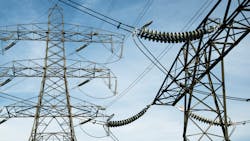At the December 2019 Raab Energy Policy Roundtable in the PJM Footprint meeting, Dr. Jesse Jenkins of Princeton University threw down a climate challenge for grid planners: "If you want to get down to zero emissions … we have to double overall electric supplies from carbon-free sources sometime in the next five to 10 years. Sometime between 2035 and 2040, we have to build the equivalent of all U.S. electric generation from new carbon-free sources to be on track. And then, if we’re on a rapid electrification pace, we need to do that all again by 2050 … We’ve built the entire U.S. grid we have today in about 150 years. We have to do all of that [again] in the next 30 [years]. So, this is a huge lift."
If we share Jenkins' concerns, then parochialism and internecine squabbles in the delivery of energy services must be thrown to the curb. Planning, development, and operation of transmission must undergo a rapid, radical transformation. Transmission is the physical backbone and neural network connecting all energy producers to energy consumers.
Transmission planning overseen by the Federal Energy Regulatory Commission (FERC) and carried out by the Regional Transmission Organizations (RTO) and other regional planning authorities is guided primarily by Order 1000. My intent as FERC chair when Order 1000 was issued was to promote the optimization of transmission planning by encouraging competitive procurement of transmission services that would open the planning process to more creative low carbon alternative transmission solutions, facilitate multi-stakeholder participation in the planning process, and foster innovative inter-regional transmission projects to facilitate delivery of low carbon solutions among planning regions.
Regretfully the promise of Order 1000 has not come to pass. Transmission Owners (TOs) with assets in a planning region (or "incumbents" as they are known) still dominate stakeholder-driven planning processes in RTO regions. Outside of RTOs, non-incumbent interests are largely ignored.
Regarding competition in electric transmission infrastructure development, The Brattle Group recently reported: "The current level of competition in electric transmission has been very limited … Overall, the transmission projects subject to competition represent 3% of U.S. nationwide transmission investments between 2013 and 2017 … Ultimately, the U.S. will require a more robust transmission infrastructure. Using competitive forces to stimulate innovation and reduce the costs of necessary investments both increases opportunities for transmission developers while providing value to customers."
Since the issuance of Order 1000 in 2011, incumbent TOs have relentlessly chipped away at its competition provisions and have even instigated state legislation in efforts to block non-incumbent developers’ competitive transmission projects. So far, there have been less than three dozen competitive solicitations for transmission projects in the U.S. out of the hundreds of completed projects. Yet Brattle estimates that over US$1.5 billion per year could be saved by consumers if a robust, competitive transmission procurement process were in place. These savings could be used to develop more low carbon energy resources and the infrastructure to support them.
Competition is not the only arena in transmission planning that has failed to live up to its Order 1000 promise. Inter-regional transmission collaboration with the development of robust inter-regional projects to deliver large quantities of renewable resources from resource-rich areas of the Southwest and Midwest, and even offshore to load centers on the East and West coasts, has never materialized.
A final area of concern bridges the gap between transmission planning and operations. Congestion and inefficient underutilization of existing assets are rampant problems of our U.S. transmission system. A recent report estimates there are over US$5 billion in annual congestion costs on the grid in the RTO areas alone, despite the fact that the utilization factor of the grid is likely less than 30%.
How do we rectify our transmission development and operational shortcomings if we are to meet the challenge? Foremost, we need a national transmission plan that is larger than the vision of any individual developer, TO, or group of TOs in an RTO. The plan must be designed to achieve our future carbon reduction objectives for at least the next two to three decades. To be successful, this plan must be developed as a Congressional directive, with input from the states and multi-stakeholder groups, and enacted as part of a national decarbonization policy.
Next, FERC should be empowered to enact regulations to carry out the plan. RTOs should be made universal mandatory organizations to ensure independence in implementing the plan. Former FERC Chairman Pat Wood tried and failed to put such a policy in place. To meet Jenkins’ challenge, it’s time to revisit it.
FERC should be empowered to oversee the siting of the infrastructure approved under the plan, similar to the authority it has to site natural gas pipelines. All transmission infrastructure authorized within the RTO planning processes to carry out the national transmission plan should be competitively bid. On the efficiency operations side, FERC should modify its transmission incentive rule to reward efficient upgrades to the existing grid from competitive proposals by developers who would share in the efficiency savings their projects produce.
These will be considered radical steps by some. But if we hope to accomplish Jenkins' "huge lift" necessary to combat the climate crisis staring us down, radical steps are unfortunately required.
About the Author
Jon Wellinghoff
Jon Wellinghoff is CEO of GridPolicy, Inc. He served as chairman of the Federal Energy Regulatory Commission (FERC) from 2009 to 2013.
